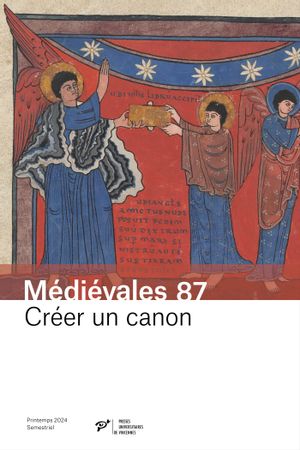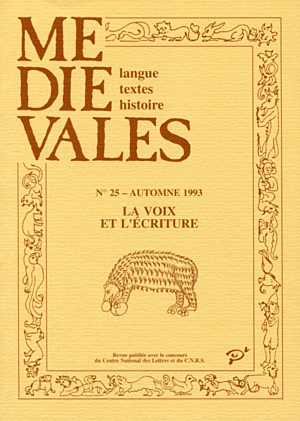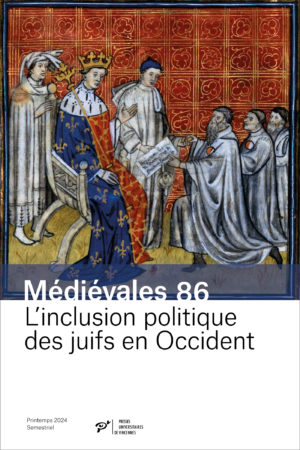Jacques FONTAINE : « Sulpicius Severus, a Witness to Oral Communication in Latin at the Close of the Fourth Century in Roman Gaul »
The diversity of cultural levels shown by the protagonists in the writings of Sulpicius Severus on Saint Martin of Tours, makes these an exceptional document on communication in Latin just before the great invasion of 406 in Roman Gaul. A former soldier turned monk, the bishop of Tours practiced the concise, efficient and unadorned language of a man of action who has little use for flourishes. He is thus the exact opposite of his biographer, a native of Bordeaux and a lawyer steeped in literature. In the preface to his Vie de Martin, the latter depicts in an affected manner an ideal for a conversion of style, which he partially carrries out by imitating Sallust, whose compact style helped him draw doser to the ascetic simplicity of Saint Martin. Well-read Aquitanians whom Sulpicius’s influence attracted toward Saint Martin’s form of asceticism also strived to implement the same conversion, but in the Dialogues they are shown deriding a Gaul from the North, who pretends to be intimidated by them : this leads to an onslaught of comedy directed at the would-be illiterate. Sulpicius, despite bis literary transformations, suggests the existence of different levels of style rather than of language, and it is on the latter that asceticism acts as a revelator of latent conflicts between the literate and the illiterate : Gauls form the North and the South, aIl of them Latin-speakers.
André CRÉPIN : « Latin and English Poetics – Notes on Macaronic Texts »
Old English literature is one of the oldest vernacular literatures in Europe. Bede (d. 735), who wrote chiefly in Latin, felt no contempt for the English language King Alfred (d. 899) applied a systematie policy of translation into English Abbot Aelfric (ca. 1 000) considered Latin and English as being on nearly equal terms. The immense debts of Anglo-Saxon writers to Latin is well known. However, macaronic passages in Old English poetry have not been studied recently nor closely. The Latin segments borrowed from classical texts, rythmical hymns and prayers, or glossaries, and inserted into Old English poems throw light on the technique of composition of the poets. They underline the formulaic nature of the haif-lines and the metrie importance of the syllabic volume. They evidence a noteworthy awareness of the linguistic features of Latin. On the other hand, the small number of such segments shows that Latin and English are kept separate : each type of discourse has its own language.
Michel BANNIARD : « The Two Lives of Saint Riquier : from Mediatic to Hieratic Latin »
By applying the principles of retrospective sociolinguistie analysis to a specific example of narrative, in this case the rewriting of the Life of a Merovingian saint – Saint Riquier – during Carolingian times, this paper demonstrates how it resulted in the loss of its mediatorial character between the traditional (spoken and written) language of the learned and the language spo”ken by the illiterate. On this occasion it may be noted that the complicity existing between the narrator and his public, manifest in the 7 th century, had vanished in the 8 th. Thus what had been a popularizing (mediatic) narrative, came to be an aristocratizing (hieratie) narrative.
Michael RICHTER : « The Languages in Celtic-Speaking Countries »
0f the Celting languages which survived into the Middle Ages (and beyond) in the British Isles, only two were used extensively in written form : lrish and British (ancestor of Welsh). Both were written in the Latin alphabet, British exclusively, Irish predominantly (with an early phase of ogam). It can be maintained that at the beginnings of writing these two languages occurred roughly at the same time, namely around A.D. 600 (ogam was written earlier). It is at first sight curious to find that lrish was written much more extensively than British even though the Irish and the Britisli shared a comparable cultural back”ground. In addition, British had existed for several centuries in Roman Britain amidst a Latin written culture. In this paper it is suggested as a hypothesis that writing British may, for this very reason, have been retarded, whereas in lreland, where alphabetic writing arrived late, the native language had long been cultivated by men of learning, and therefore no inhibition was felt to place the native language beside Latin, on the same level.
Roger WRIGHT : « Hispanic Sociolinguistics (VlIlth-Xlth Centuries) »
This article traces the changes that took place in the sociolinguistics of the Iberian Peninsula between 700 and 1 100 A.D. In 700, apart from the Basques, the Peninsula was monolingually Early-Roman speaking. The relationship between Romance, Arabic, Berber languages and Hebrew in AI-Andalus are outlined, as the society gradually became generally bilingual (Arabic-Romance), with three alphabets (Arabic, Roman, Hebrew) and varying patterns of literacy (from mostly Roman/Latin to mostly Arabic). Mozarabie Romance was probably not distinguished then from Spanish Romance in general for Visigothic culture continued to the north of the religious divide as well. The pattern of Early Romance evolution is allied to the continuing attempts to write in the traditional way, with old-fashioned morphology and sometimes also) old-fashioned syntax. The manuscript of the earliest Romance glosses (eleventh century) also included the first attempts at writing Basque. Catalonia saw the arrival in the Peninsula of some Frankish linguistic habits, including the separately-conceived form of language we now call Medieval Latin. The sociolinguistic picture changed sharply at the end of this period, with the Christian capture of Toledo and the Europeanization of Spanish Christian culture.
Angelika GROSS : « The Idea of Folly in Text and Image : Sebastian Brant and the insipiens »
The concept of folly underwent its most important evolution between the thirteenth and fifteenth centuries. When tracing an iconographic and literary course from Sebastian Brant’s Narrenschiff to Psalm 52, by way of Notre Dame of Paris and the Psychomachia, the contradictions present in the idea of folly become evident. The term insipiens used in Psalm 52 was figuratively represented to illustrate the text, and gave rise to vanous iconographic interpretations. The representation generally took the form of a symbolic figure, and it is precisely the exceptions to this tradition which mark a step by step evolution leading to a portrait of the court jester. On the threshold of the l6th century, by a fusion of fiction and portrait, Sebastian Brant used the image of the court jester to present a new form of critique demonstrating the differences between each person’s real or presumed role in life. Yet by applying the term “folly” to his personal vision of the world as well, Brant gave a new dimension to the dilemma set forth by the insipiens of Psalm 52.
Erie BERTHON : « The Smile of the Angels. Childhood aud Spirituality in the Middle Ages (XIIth-XVth Centuries) »
This paper explores the concept of the spirituality of childhood in the Middles Ages. The infans, – the child who does not yet speak – played a prominent role in medieval spirituality. The infant is often depicted in texts, literary and others, as the natural intermediate between man and God. Considered innocent, because it is free from sin of any kind, the child shares the virtues of the Son of God. Thus Christ returning to earth, as in the exempla, is often portrayed as a child. Lastly, the image of the infant is used to represent the elect – angels and souls in medieval iconography – symbolically relating the child to paradise and salvation.
Hilano FRANCO J.-R. : « The Power of the Word : Adam and the AnimaIs in the Tapestry of Gerona »
A scene from the tapestry of Gerona (11th-I2th century) depicts Adam naming the animais creatcd by God. The author explores the significance of this scene and suggests three interpretations. The first pertains to the magie powers which were believed to be inherent in the Word, an ancient belief which was later adopted by Christian Theology and which in the case of Gerona, may be connected with the Myth of Orpueus. But the scene may also be interpreted as an allegory of society where each animal represents a social group. Lastly, the power to bestow naines attributed to Adam served to illustrate another, similar power, one which had a great influence in Gerona : that of the Gregorian Reform affecting the clerics.






